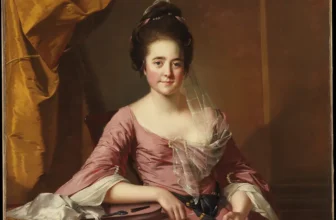What Art Auctioneers Don’t Want You to Know: The Hidden World Behind the Gavel
Shopping Ads: Antique Oil Paintings On Canvas For Sale. Limited Originals Available 💰😊
Authentic hidden masterpieces, Explore old master antique oil paintings from the Renaissance and Baroque eras. From 15th-century to 18th-century Antique Paintings. Bring the Renaissance and Baroque in your home. Shop Now!
🎨 Antique Oil Paintings On Canvas Renaissance, Baroque Art Antique Oil Paintings, Make Offer 16th to 18th Century Portrait Paintings
Art auctions are glamorous, thrilling, and, at times, mysterious. Beneath the glossy catalogs, the champagne receptions, and the rhythmic chant of the auctioneer lies a world of hidden incentives, insider tactics, and strategic manipulation. Collectors, investors, and even first-time bidders often walk into auction houses believing in transparency and fair competition.
The truth? The art auction world operates under its own set of rules, many of which are never publicly discussed.
In this deep exposé, we’ll uncover the secrets auctioneers don’t want you to know, explore how the system subtly tilts against buyers, and reveal expert-level tactics to outsmart the pros.
The Art Auction Myth: How the Game Is Rigged Against Buyers
When you raise your paddle, it feels like you’re entering a fair competition. In theory, the highest bidder wins. But in practice, the system is tilted, carefully, elegantly, and legally, toward the auction house and the seller.
The Illusion of Transparency
Auction houses project authority and fairness, but many details remain obscured. The catalog may list a “guide price” or “estimate,” but those numbers are often strategic bait.
Low estimates create bidding excitement and attract more participants.
Hidden reserves (the minimum price the seller will accept) protect sellers but manipulate buyer psychology.
House bids, bids placed by the auctioneer on behalf of the seller, are legal but deceptive. They create artificial competition, nudging real bidders upward without genuine rivals.
The Psychology of the Gavel
The rhythm of an auctioneer’s voice, the crowd’s energy, and the tension of the countdown all serve one purpose: to trigger impulsive behavior.
Bidders are subtly conditioned to act fast and emotionally, precisely what seasoned auctioneers rely on. Every pause, gesture, and nod is part of a psychological playbook designed to keep you bidding beyond your limit.
Whispers, Winks, and Winning Bids: The Unspoken Rules of Art Auctions
If you’ve ever attended a live art auction, you may have noticed quiet glances between staff and clients, discreet hand signals, or subtle nods that seem to mean everything and nothing. These are the “unspoken rules” of the auction world, an invisible etiquette that separates insiders from amateurs.
Pre-Auction Power Plays
Before the auction begins, insiders already have advantages:
Private previews allow top clients to examine works up close, sometimes weeks in advance.
Pre-arranged bids can secure artworks even before they hit the public block.
Preferred clients often receive early access to confidential information, like other bidders’ interest levels or the seller’s expectations.
The Language of Discretion
Auction houses cultivate long-term relationships with collectors and dealers. Regular clients often receive subtle signals from the podium, nods, pauses, or eye contact that hint at when to bid or when to stop.
Meanwhile, new bidders are left guessing, unaware of these micro-communications that influence the auction’s rhythm.
The “Chandelier Bid” Mystery
Ever seen an auctioneer call out phantom bids to the back of the room? Those are chandelier bids, nonexistent bids designed to stimulate real ones. While technically legal, they blur the line between performance and manipulation.
What Auctioneers Hope You’ll Never Ask About Provenance and Price
The provenance, or ownership history, of a work of art can make or break its value. But it’s also one of the most opaque aspects of the auction process.
Provenance as Marketing
Auction catalogs present provenance like a guarantee of authenticity, but that’s not always the case. Provenance records can be incomplete, exaggerated, or even intentionally vague.
For example: “Private European Collection” could mean anything, from a prestigious family estate to an unknown dealer with questionable sourcing.
The “Authentication Loophole”
Auction houses often use language crafted to protect themselves:
“Attributed to,” “Circle of,” or “Workshop of”
These terms sound scholarly but actually serve as disclaimers, shielding the auctioneer from responsibility if the attribution turns out false.
Price Setting Behind Closed Doors
Sellers and auction houses negotiate reserves (the lowest acceptable sale price) privately. Meanwhile, estimates are strategically chosen to attract bidding.
Low estimates suggest accessibility.
High estimates create prestige.
Both are marketing tools, not reflections of fair market value.
And here’s the kicker: even when a piece “sells,” the headline price may not represent reality. Many transactions fall through post-auction, renegotiated quietly behind closed doors.
Million-Dollar Illusions: The Hidden Economics of the Art Auction World
Behind every record-breaking sale is a complex financial structure. Buyers rarely realize how much of their money goes not to the artist or seller, but to the auction house itself.
Commissions and Buyer’s Premiums
Auction houses charge sellers a commission fee (often 10–20%) and buyers a premium (typically 20–30%).
In other words, both sides pay.
A $1 million hammer price might cost the buyer $1.25 million, and net the seller just $850,000. The house pockets the difference.
Third-Party Guarantees
High-value works often come with financial guarantees from investors or collectors. These third parties promise to buy the work if no one else does, ensuring the auction house gets paid.
But here’s the twist: those same guarantors sometimes end up buying the artwork at a discount, effectively being rewarded for propping up the sale.
Price Inflation and Market Engineering
Auction houses thrive on headline sales. Each new “record” creates buzz, attracting more consignments and bidders.
To achieve these records, houses may:
Encourage sellers to set low estimates to ensure a bidding frenzy.
Facilitate guarantees that artificially stabilize prices.
Stage media hype around star lots to manipulate perception.
The result is a self-sustaining illusion: an art market that appears ever-rising, even when demand fluctuates.
The Art of Manipulation: Bidding Tactics You’ll Never Hear Explained
Bidding at an art auction is both art and warfare. While newcomers bid with emotion, professionals play by strategy.
The “Anchor Bid” Trap
Auctioneers start low to build momentum, but early bids often “anchor” bidders into thinking higher prices are reasonable.
Once you’ve bid once, you’re psychologically invested, making it harder to stop later.
Bid Increments and Control
Auctioneers control increments, subtly manipulating the pace of competition. Rapid increases create urgency; slow ones draw out emotional attachment.
And when you hear the phrase “fair warning”? It’s not fairness, it’s theater. The auctioneer already knows whether the item will sell or be passed.
The Dealer Advantage
Art dealers are the sharks of the auction pool. They know which pieces are undervalued, who else is bidding, and when to drop out.
They’ll sometimes let a novice overpay, only to resell the same piece privately later for profit.
How to Outsmart Art Auctioneers and Bid Like a Pro
You can’t change the rules, but you can learn to play the game better. Here’s how professionals protect themselves and maximize opportunities.
Do Your Homework
Research the artist’s auction history and market trends.
Review provenance records critically; ask for supporting documents.
Compare pre-sale estimates to private sales data on platforms like Artnet or MutualArt.
Set Your True Limit
Decide your maximum bid before the auction, and never exceed it. Auctioneers are trained to test your limits, but discipline wins over impulse.
Watch the Room, Not the Auctioneer
Observe other bidders, not just the person on the podium. Seasoned collectors spot patterns, who bids aggressively, who hesitates, who’s working the phones.
Use Absentee or Phone Bids
To avoid emotional pressure, consider placing an absentee bid or using a phone representative. This keeps your actions discreet and prevents the adrenaline rush from clouding judgment.
Understand the Premiums
Always factor in the buyer’s premium and taxes before bidding. The hammer price isn’t the final cost, and auction houses rely on that misunderstanding.
Leverage Post-Auction Opportunities
If a lot doesn’t sell, inquire afterward. Unsold pieces (known as bought-ins) can sometimes be acquired privately at a better price.
The Future of Transparency: Technology vs. Tradition
The digital era is slowly changing the power dynamics of the art auction world.
Online Auctions and Data Access
Platforms like Sotheby’s Digital, Christie’s Online, and independent sites such as Artsy have made auctions more accessible.
Yet the same psychological tactics, low estimates, house bids, urgency, have simply migrated online.
Blockchain and Provenance
Blockchain technology offers a potential revolution in provenance tracking, creating transparent, immutable ownership records. This could dismantle one of the biggest shadows in the art world: fake or incomplete histories.
However, major auction houses have been slow to adopt blockchain transparency at scale, because opacity still benefits their margins.
Collectors’ Empowerment
As more collectors educate themselves and use digital resources, the balance may shift. Knowledge is leverage, and the next generation of buyers is harder to manipulate with old tricks.
Lifting the Veil on the Art Auction World
Art auctions are not inherently corrupt, they’re complex ecosystems blending commerce, psychology, and theater. The problem is not that auctioneers lie, but that they reveal only half the truth.
When you walk into an auction room armed with knowledge, the mystique begins to fade. You start to see how estimates are bait, how bids are choreographed, and how prices are stories as much as numbers.
The art world thrives on illusion, but that illusion only works when you believe it.
Once you understand the game, you can play it with confidence, strategy, and clarity.




